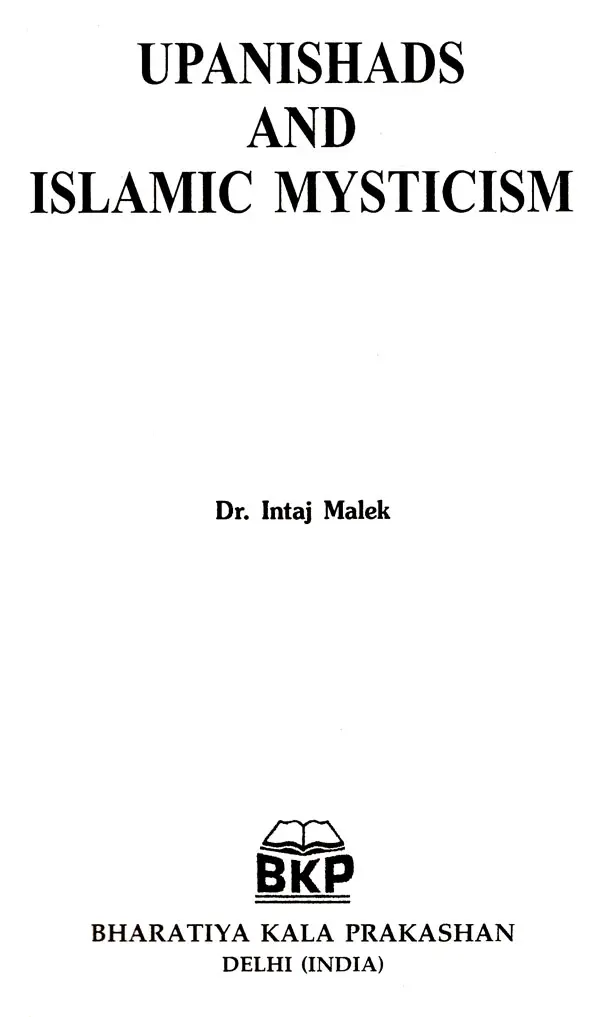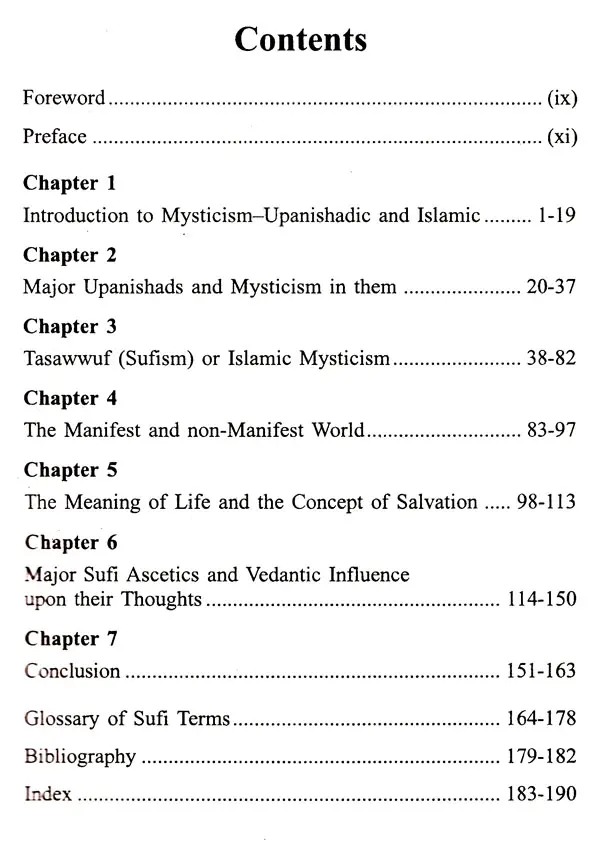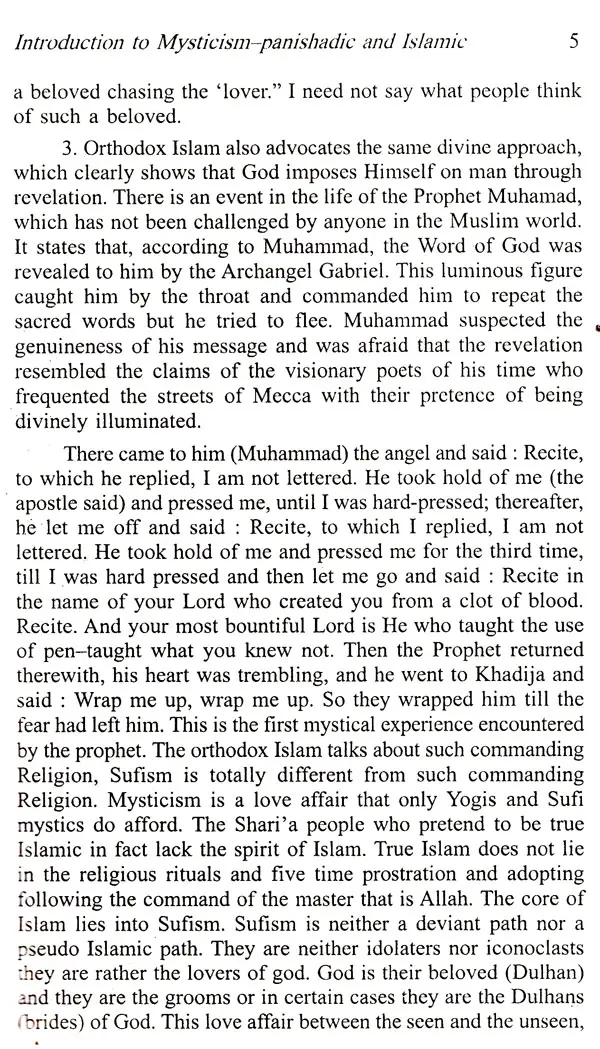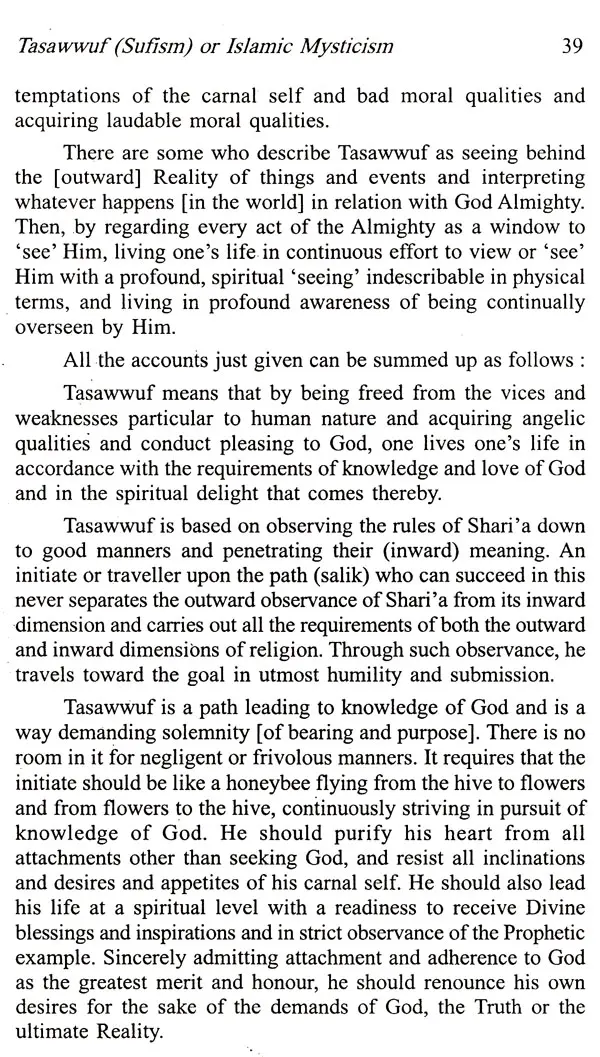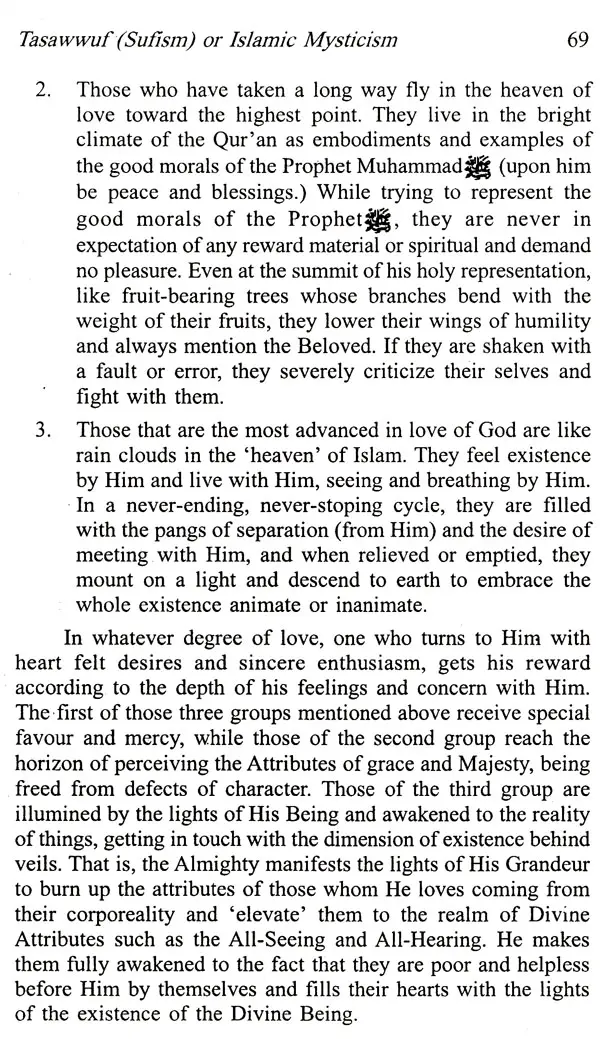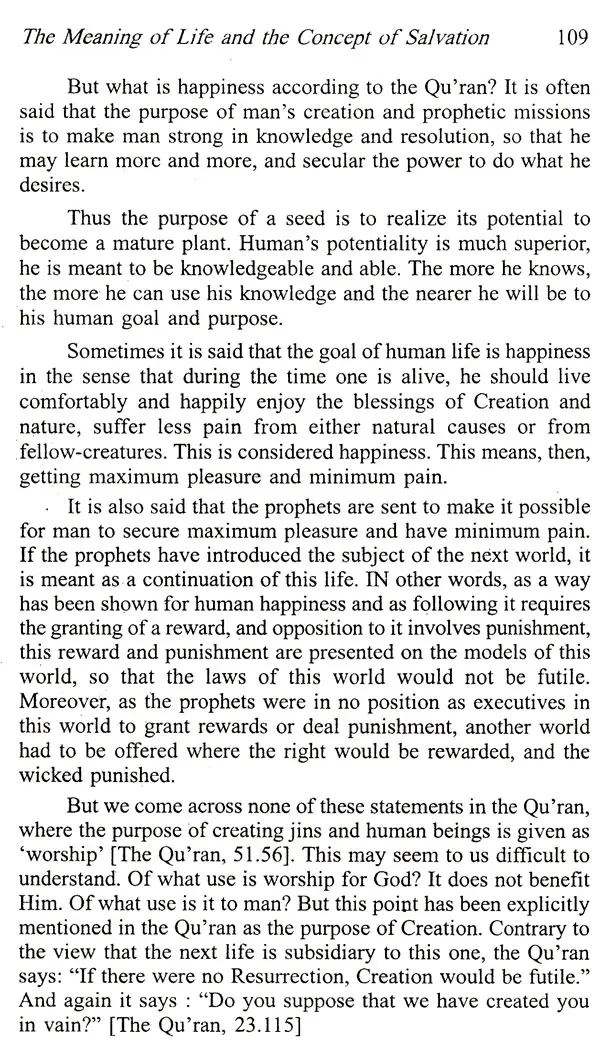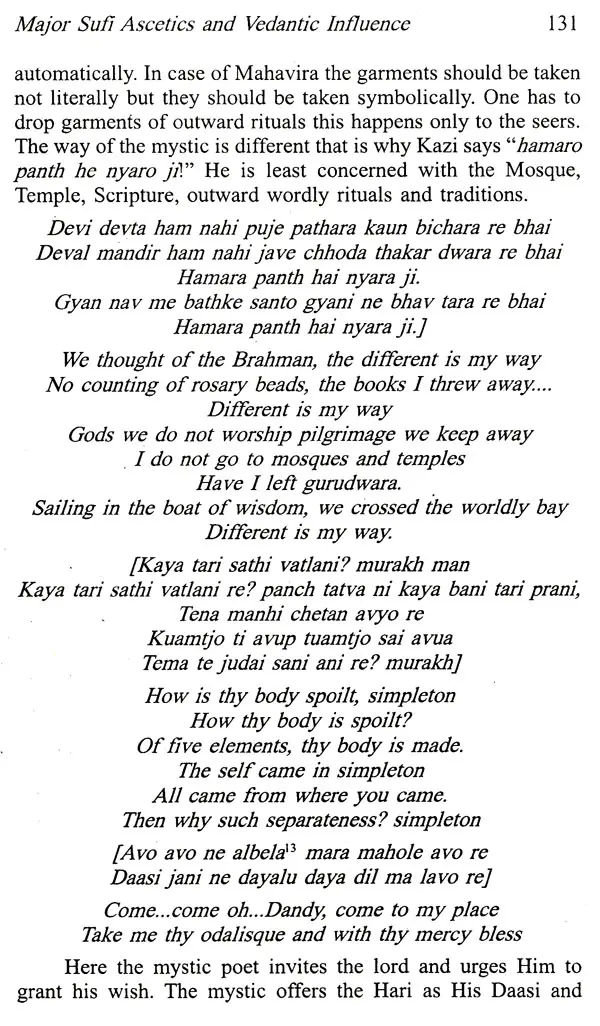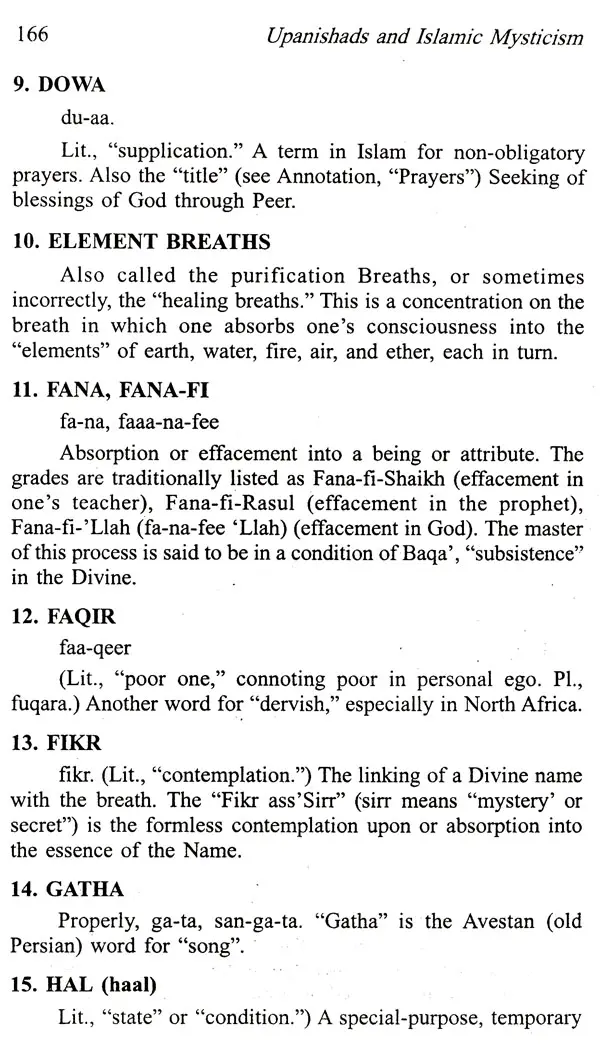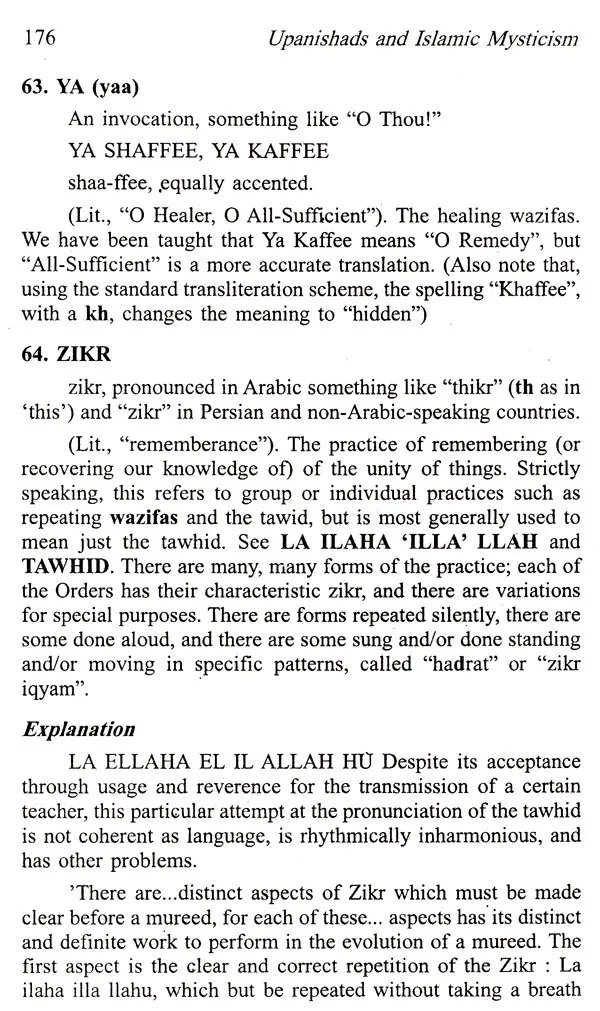
Upanishads and Islamic Mysticism
Book Specification
| Item Code: | UAN972 |
| Author: | Dr. Intaj malek |
| Publisher: | Bharatiya Kala Prakashan |
| Language: | English |
| Edition: | 2004 |
| ISBN: | 8180900649 |
| Pages: | 200 |
| Cover: | HARDCOVER |
| Other Details | 8.80 X 5.80 inch |
| Weight | 390 gm |
Book Description
Upanishads do have everything that can satisfy the spiritual appetite of human beings. They are full of poetic beauty, spirituality and morality accompanied by an emphasis on knowledge of the Self that is Brahman. Upanishads are a proud possession of the Indian mystical tradition that has opened the new horizons for the development of other mystical traditions.
Islamic Mysticism that is popularly or rather fondly known as Sufism, seems to me very similar to the Upanishadic mysticism. The Sufi mystics of Islam do talk about the unity of the Self with the Supreme self i.e. the Brahman in Upanishadic language. The two separate traditions of spirituality ultimately merge together in fena or realization of the self. The book deciphers the theme in the chapters that follow.
He is interested in writing Poetry, Plays, and Articles on Literature and Philosophy. He has translated several Plays and Poetry from English into Gujarati language and has written several Poems and Plays in English. He has translated five plays from English into Gujarati and written two full length plays in English. He works as a Sales Tax Officer Class-I with the Department of Sales Tax, Gujarat.
The study of Philosophy is a rigorous study and to write on comparative study on completely two diverse philosophy of Mysticism is rather more rigorous. Dr. Malek has taken a great pain in comparing these two diverse currents ultimately leading to the same goal. It is rightly said in this small monograph that Indian philosophy and particularly Upanishadic Philosophy has spread the aroma of love and brotherhood all over the world. The Vedas and the Upanishads have provided the world the right understanding and the right knowledge. In fact they have provided the world the right way of living. Indeed they are proud possessions of our glorious past.
The Upanishads are full of mystical mantras. The 'Isha' Upanishad's first stanza is full of the mystery of the cosmos. Dr. Malek while writing on Upanishadic and Islamic mysticism has taken into his ambiance the profuse impact of this Upanishad. He has copiously quoted from almost all Upanishads to illustrate his comparative study.
Islamic Mysticism that Dr. Malek (quoting the western scholars) calls Sufism is the heart of Islam. The real Islam lives in the life of a Sufi Dervish. The Sufis always talked about the unity of the Self with the Supreme Self and this is the concept hidden in the Upanishads.
Upanishads and Islamic Mysticism is the subject that has enhanced the appetite of my soul. Needless to narrate the beauty of the Upanishads here in the preface but I cannot prevent my self from saying that the Upanishads do have everything that can satisfy the spiritual appetite of human beings. They are full of poetic beauty, spirituality and morality accompanied by an emphasis on knowledge of the Self that is Brahman. Upanishads are a proud possession of the Indian mystical tradition that has opened the new horizons for the development of other mystical traditions. Whether the western scholars agree or not the Upanishads are the roots of the mystical traditions evolved in the world.
Islamic Mysticism that is popularly or rather fondly known as Sufism seems to me very similar to the Upanishadic mysticism. The Sufi mystics of Islam do talk about the unity of the Self with the Supreme self i.e. the Brahman in Upanishadic language. I have allotted, two separate chapters to the discussion of mysticism of the Upanishads as well as to the discussion of Taswwuf (Islamic mysticism or Sufism). I have tried to bring out the conclusion that the ultimate Reality remains one and the same by a comparative study of both of these mystical traditions. I have also assigned a separate place in the form of a chapter to Sufi saints and mystics and their mystical thoughts and also the influence of the Vedantins on them.
India is a beautiful garden with varied religious flowers and plants spreading to the world the aroma of love and brotherhood, peace and non violence, kindness and generosity not only towards human beings but towards animals and to the vegetation world. It is in such a garden that the flowers of Upanishads blossomed and ripened into fruits giving nectar to the entire world. It is because of these magnanimity and richness of spirituality that encouraged me to write on such a subject.
My monograph will be beneficial to the students, scholars, teachers, research workers and to the people enmasse who are interested in the study of mysticism and to those who want to bridge the gap among people of different sects adhering to different religions.
I regret my inability, as I could not use diacritical marks for Sanskrit terms and transliteration used in this study due to some technical reasons. I have used Arabic Sufistic terms in many places for that I have given an exhaustive glossary. Dr. Yajneshwar Shastri has always remained a source of inspiration. I am highly thankful to him for his generous help without caring for time, and writing a foreword to this book. I owe my thanks and gratitude to Dr. Sunanda Shastri as she has always encouraged me with her suggestions and Mr. Yogesh Shastri for his kind help to do proof reading. Special thanks to my cousin M. Bakar Momin and Mr. Jagadish Shah who helped me to prepare footnotes and bibliography. I would like to thank my wife Mumtaz Malek who has always been helpful to me in making the reference materials ready whenever I needed them. How can I forget Principal Mr. B M Peerzada ex. Dean of the Gujarat University who is a fountain of inspiration, a living legend and a personality larger than life? I also thank Mr. C.P. Gautam of Bharatiya Kala Prakashan Delhi for beautifully. designing and printing my work in a book form.
**Contents and Sample Pages**
